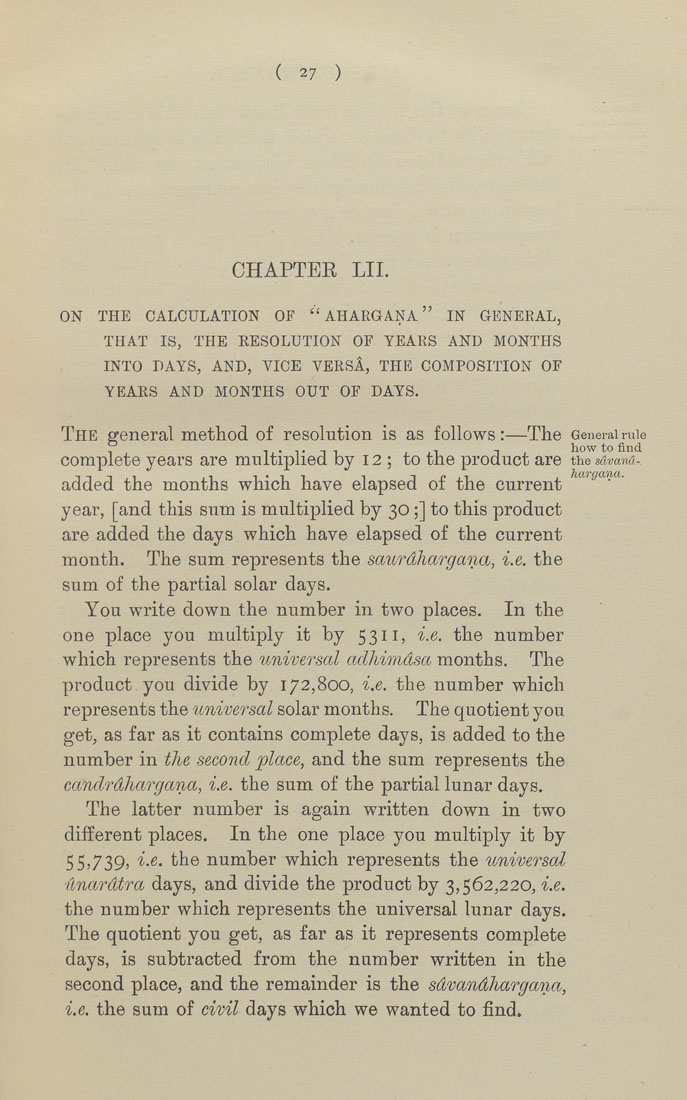( 27 )
CHAPTER LII.
ON THE CALCULATION OF ''AHAEGANA" IN GENEEAL,
THAT IS, THE RESOLUTION OF YEAES AND MONTHS
INTO DAYS, AND, VICE VEESi, THE COMPOSITION OF
YEAES AND MONTHS OUT OF DAYS.
The general method of resolution is as follows:—The General rule
1 • T -i 1 V J1 ^ ^°^ ^^ ^^^
complete years are multiplied by I2 ; to the product are th&sdvami-.
added the months which have elapsed of the current ' '"
year, [and this sum is multiplied by 30 ;] to this product
are added the days which have elapsed of the current
month. The sum represents the saurdhargana, i.e. the
sum of the partial solar days.
You write down the number in two places. In the
one place you multiply it by S'^ii, i.e. the number
which represents the universal adhimdsa months. The
product you divide by 172,800, i.e. the number which
represents the universal solar months. The quotient you
get, as far as it contains complete days, is added to the
number in the second place, and the sum represents the
cand^rdhargana, i.e. the sum of the partial lunar days.
The latter number is again written down in two
different places. In the one place you multiply it by
55,739, i.e. the number which represents the universal
unardtra days, and divide the product by 3,562,220, i.e.
the number which represents the universal lunar days.
The quotient you get, as far as it represents complete
days, is subtracted from the number written in the
second place, and the remainder is the sdvandhargana,
i.e. the sum of civil days which we wanted to find.
|








